While there are no parallels in the scale of human resource requirement or management in the Air Force and the corporate sector, both work on the foundations of leadership and teamwork to deliver efficiently. There are lessons to be learnt from across sectors, says former Wing Commander Madhavan Narayanan, now Director, HR & Admin of Toonz Animation, India Pvt Ltd
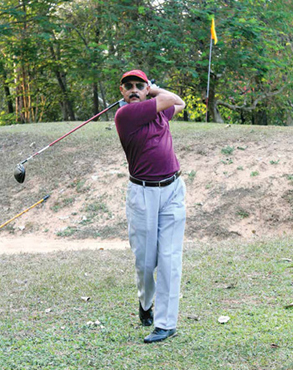
A teenage fascination for airplanes and the desire to become a pilot scripted former Wing Commander Madhavan Narayanan’s flight passage with the Indian Air Force (IAF). He found his role model in his own father, who was Principal Chief Conservator of Forests and a keen wildlife photographer. Former Wing Cdr M Narayanan took immense strength from his stoic father who battled to survive his post-operative illnesses for more than 20 years. However, early beginnings saw M Narayanan charting his journey as a young cadet with the NCC Air Wing (Senior Division). His strong determination enabled him to fly through successfully in many qualifying examinations and earn him a scholarship to learn flying under the NCC Air Wing. Post completion of his PPL (Private Pilot License) from the Kerala Flying Club, Trivandrum, he actively joined the IAF. He eventually moved on to the administrative rung and continued with the IAF, logging 22 years of service. Although his tryst with the corporate world came about as a much needed decision to balance his duty to his ailing father and his profession, it revealed his HR leanings and people management skills. Currently serving his second innings with Toonz Animation India Pvt Ltd, as Director- HR & Admin, he shares his experiences and learnings from the armed forces that ‘trains to lead from the front’ -which he leverages in his corporate role.
As a teenager, I was very fascinated by airplanes and wanted to become a pilot. I joined the NCC Air Wing senior division and passed the PABT, a qualifying series of tests required to become a pilot. I got a scholarship to learn flying through NCC and did my PPL (Private Pilot License) from the Kerala Flying Club, Trivandrum. This led me to join the IAF. Although I was selected for the flying branch in the IAF, I could not clear the medicals and hence joined the administrative branch of the IAF. I have done flying only in civil for my PPL through NCC and served a total of 22 years, including the one year training at the Air Force Academy, Hyderabad.
I was born in Trivandrum and did my early schooling in many parts of Kerala. I completed my higher secondary schooling from Model High School, Trivandrum and thereafter completed my graduation there. My father was an IFS (Indian Forest Service) officer who became the first Principal Chief Conservator of Forests in the state of Kerala. My mother, a rank holder in M Sc, was a lecturer during her younger days and then left the job to look after the two brats-I and my brother.
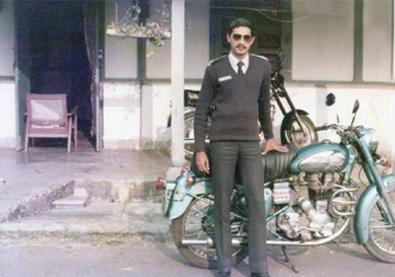
No, none in the family inspired me to join the Air Force. It was my good friend from school, the Late Flt Lt Remakanth, a recipient of the President’s gold medal in Scouts, who inspired me to join the NCC Air Wing along with him. Unfortunately he passed away in a road accident in 1987. We joined the Air Force (AF) together, which ultimately made me a proud AF officer. My mother too encouraged me in pursuing my interests, which included joining the AF. My other pillar has been my better-half, Lakshmi Prabha who has been wonderfully supporting me throughout my career. In our 31 years together, she has stood by me even under the most difficult situations. For us, while we move destinations, it is not too difficult, as within the services, officers have a set pattern to follow. But for a lady it is not so, and she has adjusted well in all circumstances.
While in the IAF, I undertook Advance Security and Intelligence Course at the Air Force Intelligence School, Pune; the Advance Criminalistics Course from the National Institute of Criminology & Forensic Science, Delhi and the Chief Administrative Officers’ (CADO) course from the Air Force Administrative College, Coimbatore where I topped the course and was awarded for excellence in academics and stood first in the overall merit list. I had also undergone a Project Management Course from the College of Defence Management, Secunderabad. The Chief Administrative Officer’s Course and the Project Management Course helped me a lot in taking decisions both in my IAF as well as in my corporate career as I learnt some key techniques of administration and management through these courses.
My last role was that of Chief Administrative Officer (CADO) of a Forward Fighter Base in Bagdogra, West Bengal. I had to opt for pre-mature retirement on compassionate grounds due to my father’s chronic illness in the year 2005 and since then have been serving in the corporate sector.
I was inducted into the Permanent Commission of the IAF in June 1984 after a year-long training at the Air Force Academy, Hyderabad. Thereafter, I was posted at a Transport Aircraft Base in Jorhat, Assam for three years. Thereafter, I was posted back to the Air Force Academy as an Instructor for administrative branch cadets in May 1987. I was then selected as Staff Officer (similar to an ADC in the Army) to an Air Marshal and I moved to Air Headquarters to New Delhi (April 1989). After a four-year tenure as Staff Officer, I was posted to the Southern Air Command, Trivandrum (1993) and subsequently was selected for a Provost and Security course at Air Force Intelligence School, Pune. Then I was posted as Asst Provost Marshal and Commanding Officer of a Provost Unit in Trivandrum (January 1994). Following the Command tenure, I moved to Allahabad as Dy. Chief Administrative Officer of an Equipment Depot (September 1997). My next move was to Southern Air Command again, in April 2000 as the Command Works Officer before I opted for early retirement, having served as the Chief Administrative Officer (CADO) in Bagdogra from April 2003 to May 2005.
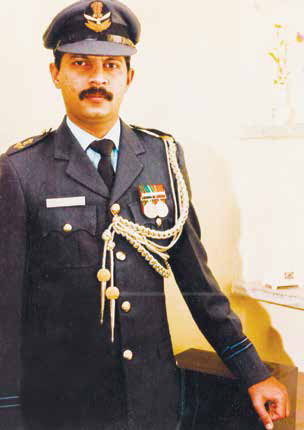
I have undergone Advanced Security and Intelligence course apart from the Advanced Criminalistics course. I was deputed from the IAF for a month long course in Delhi where they teach you various aspects of forensic science used in criminology and investigations using forensic science. I am therefore trained to investigate cases in the most comprehensive and effective manner. Human Resource Management (HRM) is part of administration in the IAF. Training is one of my passions as I have had an earlier stint as an instructor for administrative cadets in the AF.
The training period was very tough, not only physically but also academically because the idea is to make one mentally and physically tough. The module is to go through endurance tests to enable one to withstand stress and it is a real learning experience that equals none other and is the first step to training in the armed forces. We were then trained to suit the requirements of the branch we specialised in and further trained to lead a team and motivate them, etc. As a Staff Officer, I was able to enhance my communication skills as we are always dealing with very senior officials including government officials outside the armed forces. I was also responsible for going through the various cases which came to the Air Marshal, giving me an overall experience of presenting issues effectively. As a Commanding Officer and CADO, I have heightened the skills of people management further, wherein I could motivate my subordinates and ensure an effective work system.
Military HRM is unique and in the Air Force (AF), there is no specific class for HRM. But, at the same time we do undergo a lot of leadership training which I feel is all about managing people and not really the current HR practices we usually refer to in the corporate sector. AF HRM is primarily on how to lead a team, how to motivate a set of people and on how to encourage them to perform to their best.
While there are no parallels in the scale of human resource requirement or management in the Air Force and the corporate sector, both work on the foundations of leadership and team work to deliver efficiently
I really don’t think so, as things are completely different within the corporate segment and in the armed forces. When we talk of HRM from the corporate viewpoint, it is basically about manpower planning to start with, then on recruitment, moving on to training and performance management aspects leading to employee engagement such as, in motivating individuals. The entire gamut of such functions and more already exists within the defence sectors.
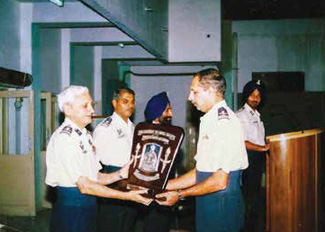
I do not think there is any learning required from the corporate to the military. Let us draw an analogy on manpower planning itself in the corporate sector viz., the defence sector. For manpower plans done by HR departments, we look into each department and on the people count required to accomplish the task. If I compare it with the AF, IAF has a huge department by itself for manpower planning called the DPP (Directorate of Personnel Planning) and we deal with huge numbers in the AF compared to any company. Here, with respect to manpower planning, we talk about 1.5 lakh personnel in the IAF, compared to around 200 or 250 or even 1000 employees in large corporations. IAF has a separate department within HR itself under DPP. It works around similar aspects akin to those in the corporate from manpower planning to recruitment. In the case of recruitment itself, there is one huge set-up of recruitments working separately for personnel below the rank of officers and for higher-ups. For officer cadres, the IAF has three selection centres in India at Dehradun, Varanasi and Mysore and these selection centres act independently for recruiting officers. The results are reviewed at AF HQs where other departments take up evaluation, ranking et al. For training, there is a separate command by itself with more than 150 training units all over the country with Bengaluru serving as its HQ. In the AF, for every aspect of human resource function you take, there are very big directorates and thousands of personnel working in each of these segments - manpower planning, recruitment, training, etc. For performance management, there is a separate set-up. Since these departments already exist in a much larger scale in the AF, I have yet to come across such a system within the corporate sector which can beat this system in the AF.
In the defence sector, leadership means to ‘lead from the front’ and we set an example ourselves. Unlike set notions that senior Wing Commander or Air Marshals ‘give orders while all others slog’, these senior officers physically combat with the enemy or against terrorism. We often hear some Major or Colonel taking in the bullet. The thought process that goes behind the sacrifice is that ‘we don’t allow the enemy bullet to go behind us unless it goes through our chest’. This kind of active leadership is what motivates the subordinates. As we lead from the front, our subordinates or the fighting force are charged up and show equal responsibility. They do it with their heart and soul and this is just not a case of mere following of orders by their seniors — it is this attitude that differentiates leadership within the defence force and the corporate.

Basically, what happens in the military is more of regimentation; you cannot generally oppose an idea of your superiors but can subtly pinpoint some changes. However, you cannot negate, but have to take orders from your superior. However, in the corporate, if you keep saying ‘yes sir’, it is not considered good. It shows lack of independent thinking. In the corporate, you can disagree with your boss but can also put across your point and that is well taken. Most corporate bosses are willing to receive good points from their subordinates. This, I think is a very good personnel trait and the defence forces should think of adopting this seriously and listen to the views of the subordinates, especially when it calls for certain key decision making.
As most organisations know, the biggest asset of any organisation is its human resource. HRM is no more a support service but a core function in any company today. As equipment and technology get upgraded, there is a need to upgrade HR too, and constantly, for any successful business. A highly trained, motivated and committed workforce will make all the difference. Personnel working in HR are usually ‘unsung heroes’ as the function they perform is crucial for the growth of the company, but it rarely comes to the fore.
I have been a member of the National Institute of Personnel Management and Madras Management Association. I do undertake training sessions and have done so with some of the corporates that I worked with, especially sessions on team building and leadership, change management, time management etc.
Most corporate bosses are willing to receive good points from their subordinates. This, I think is a very good personnel trait and the defence forces should think of adopting this seriously and listen to the views of the subordinates
My father’s illness was the primary reason for my work-life transition. Besides, the transitory nature of life in the armed forces was affecting my children’s education. Also, defence remuneration was not as adequate in those days to meet increasing expenses of quality higher education. A corporate switch therefore seemed a good and interesting idea; a new experience whereby I felt that I could use the skills acquired over the years in the IAF, effectively in the corporate world. Following a year-long hospitalisation post his heart bypass surgery, my father, also a chronic diabetic patient had to live with post-surgery complications for the next 23 years and this recuperative phase was a struggle for both my parents. That was when, I as the elder son, was duty bound to be with him. I therefore took a backseat from the IAF or, I would have definitely continued till I attained actual retirement in the IAF.
I got in touch with a few civilian friends who advised me to approach a few companies in Techno Park, Trivandrum. I received an interview call immediately from a company called Toonz Animation India Pvt Ltd. After the interview by the CEO, I was interviewed by the Chairman and he asked me one final question: “The core employees in this company are artists with a creative mind, whereas you are used to highly disciplined personnel who obey orders unquestioningly. How are you going to manage people here?” My answer was, “There’s a difference between executing an order just for the sake of it, and doing it with your full heart and soul. We in the armed forces are leaders by example and we are trained to lead from the front by motivating people and helping them believe in themselves.”
Armed force personnel tend to have a more disciplined approach to their work, have enhanced observational skills and are generally able to motivate the work-force without the need to offer higher pay
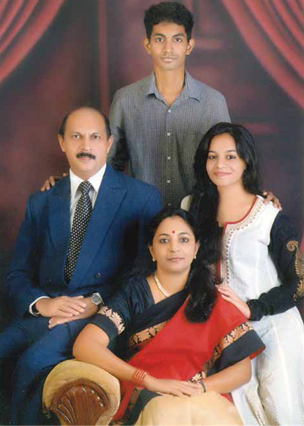
The transition was not easy at all. Initially, people looked at me differently because of my armed forces background. Apprehension existed at both ends. However, within months everyone realised that I was approachable and accommodative, without compromising on regulations that needed to be followed. Soon, I was widely accepted by everyone.
While I adapted and was engaged strictly within HRM roles, I did switch a few companies in different cities. I have been Senior Vice President– HR & Admin at Asianet Satellite Communications Ltd and currently I am serving my second tenure with Toonz Animation India Pvt Ltd as Director–HR & Admin. I had a short tryst with the health care sector after my stint with Asianet, before re-joining Toonz.
My skills and experience are best suited for human resource management. I also have a passion for training & development which is part of modern HR practice.
While it is important to understand that things are much better in the armed forces today compared to earlier times both monetarily and comfort-wise, if anyone is keen on a career switch, I’d advise them to quit the armed forces much before they attain the age of 45. Besides, they should also pursue and acquire additional management qualifications and try to build contacts while being in the services, as these are useful when you leave the armed forces. Most importantly, be mentally prepared for some drastic change - both positive and negative, in the new world. Try to enrol in pre-release courses sponsored by the armed forces in good management institutions.
Each background has its own merits. I would say that armed force personnel tend to have a more disciplined approach to their work, have enhanced observational skills and are generally able to motivate the work-force without the need to offer higher pay as the ‘carrot’ approach.
Take the initiative to do a bit extra than what is expected. In most cases you’d find that there is no need to think of complex strategies every time to resolve issues; thinking logically can help resolve them. It is a much underrated virtue. Also, learn to stay calm and not buckle under pressure. Be a team player as that’s the sign of a true leader.
Yes. Military training for a few years will groom youngsters to be more responsible and passionate towards their job and profession, this is probably why it is mandatory for the youth to join the services in some developed nations. Essential traits include leadership qualities and the ability to work under pressure.
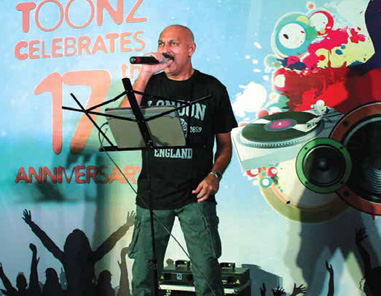
We learn how to manage a crisis in the Air Force and teamwork is the other parameter that can make or break any situation. When I was the CADO of the Fighter Base, there was an incident where a young fighter pilot who was undergoing advanced training in an MIG 23 aircraft disappeared from the radar screen during a routine sortie. The possibility was that the aircraft had crashed. Normally, the pilot ejects before crashing and a Search and Rescue (SAR) helicopter flies to the approximate location of the crash site and locates the pilot who has ejected, in order to rescue the pilot. However, in this case, the SAR helicopter searched for an entire day but could not locate the crash site or the pilot. Further aerial searches were carried out for three days without any result. We then called the army for a ground search as the terrain was a thick forested area and difficult to approach. We had set up camps in the forest and the army jawans and commandos could not locate anything for days. The entire team worked all 24 hours of the day and night. It was on the 19th day that I got a call from the Superintendent of Police communicating to us that a person collecting firewood deep in the forest saw a huge piece of cloth which he handed over to the local forest guard, who subsequently informed the police. On hearing the news, I suspected it to be a piece of parachute which is called the ‘Tail shoot’ in all fighter jets and is deployed for breaking the speed of the jet when it lands. I alerted the Air Marshal who was camping with us and on our arrival at the spot, to our utter shock, we saw a huge crater and pieces of the aircraft. The jet had shattered like glass and two trees were uprooted. This was basically due to the plane going down vertically and that is why it could not be located from the sky by the helicopter. We could retrieve only human bone-remains, which was put in a coffin, sealed and handed over to the family. It was a very traumatic period for all of us and it was only the teamwork, dedication and physical and mental endurance which led us to recover at least the mortal remains of the young pilot. Such incidents put things into perspective and equip us to see the larger picture while dealing with issues.
It’s a simple philosophy-work hard and enjoy life.
I believe that work-life balance can be achieved through planning and an organised approach. If you’d like to pursue a hobby or something of interest once a week, you need to chart a plan to make that happen and ensure that you stick to that. After a tiring day of work, I enjoy listening to music and I also enjoy singing whenever I get the chance. I’m passionate about golfing and play on the weekends.
By Sangeeta Ghosh Dastidar